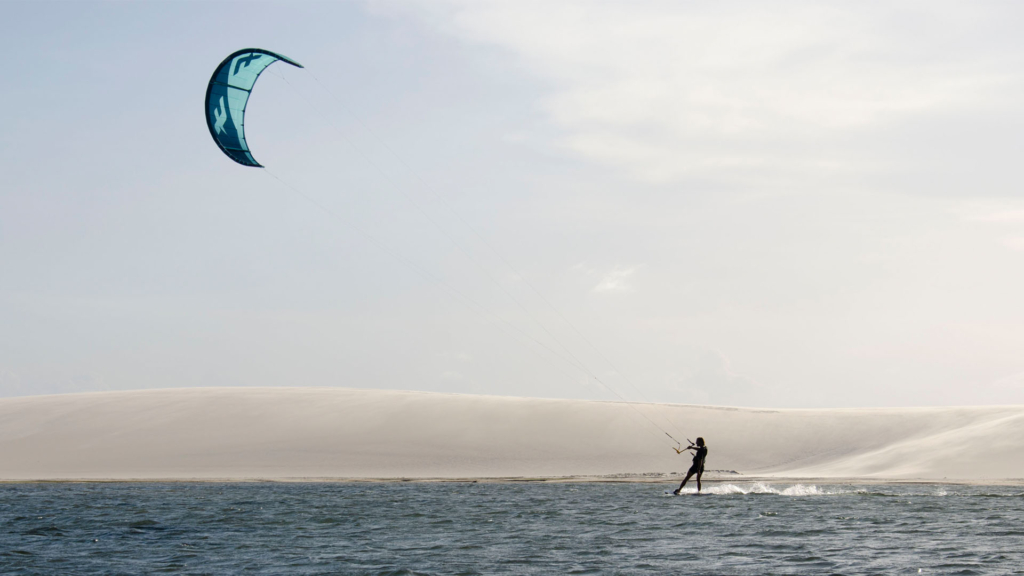Windsurfing vs. Kitesurfing: What are Their Features and Differences
When it comes to water sports that blend the thrill of riding the waves with the power of the wind, windsurfing and kitesurfing are two names that often come to mind. While both offer an incredible aquatic adventure, they differ in terms of equipment, techniques, and the overall experience they provide. In this comparison, we’ll take a closer look at windsurfing and kitesurfing, helping you decide which one might suit your water-loving soul the best.
Windsurfing: The Art of Balance and Sail

Equipment: Windsurfing involves a board, a sail, and a mast. The rider stands on the board while holding onto the boom (the horizontal bar of the sail), controlling the direction and speed by adjusting the sail’s angle to catch the wind. The sail is attached to the mast, which is connected to the board. If you haven’t decided your starting boad, check out https://easy-surfshop.com/ for your windsurfing board. You can find all the top brands there.
Technique: Windsurfing is a graceful dance between balance and sail manipulation. Riders shift their weight to control the board’s tilt and direction, while simultaneously using the sail to harness the wind’s energy. Learning to balance and steer the board can be challenging initially, but with practice, it becomes a thrilling experience.
Experience: Windsurfing offers a unique blend of tranquility and excitement. Gliding over the water while harnessing the wind’s power provides a sense of serenity, while the ability to pick up speed and even perform tricks adds a touch of adrenaline.
Kitesurfing: Riding the Wind’s Force

Equipment: Kitesurfing requires a board and a large controllable kite. The rider is harnessed to the kite, which is maneuvered using a control bar. By adjusting the kite’s position in the wind window, riders can control their speed and direction. You can also find all your kitesurfing gear at https://easy-surfshop.com/ They provide a range of kitesurfing gears including kitesurfing boad, kite, foils and even all the protection gears.

Technique: Kitesurfing combines elements of wakeboarding, windsurfing, and flying a kite. Riders use the kite’s lift to propel themselves across the water’s surface and even into the air for jumps and tricks. Mastering kite control and body positioning is key to successfully riding the waves.
Experience: Kitesurfing is all about exhilaration and adrenaline. The feeling of being propelled by the wind and the ability to perform airborne maneuvers give kitesurfing a more dynamic and high-flying experience.
Choosing the Right One for You:
Windsurfing Might Be for You If:
- You enjoy a slower-paced experience that still offers excitement.
- You’re interested in learning the art of sail manipulation and balance.
- You prefer a sport that engages your entire body and offers a good workout.
- You’re looking for an accessible water sport that’s beginner-friendly.
Kitesurfing Might Be for You If:
- You’re seeking an adrenaline rush and enjoy high-flying tricks.
- You’re comfortable with a steeper learning curve and mastering kite control.
- You want a more versatile experience, with the ability to ride waves or flat water.
- You’re ready to invest time in learning kite control and safety protocols.
Is kitesurfing or windsurfing easier to learn?
The kitesurfing and windsurfing communities often debate which sport is harder to master. Some argue kitesurfing is easier, while others favor windsurfing.
Many claim windsurfing is simpler because it has fewer elements to control. Most beginners can try basic moves within hours, though individual learning rates vary.
Kitesurfing demands a thorough understanding of the kite, which means hours of initial training off the water. However, once you grasp kite control, progression is usually rapid.
While kitesurfing is seen as more technical than physical, requiring relaxation and board control, windsurfing needs a good physical foundation, perseverance, and a grasp of various techniques. Although both sports harness the wind and offer similar experiences, windsurfing often demands deeper knowledge.
Which one is faster to learn, kitesurfing or windsurfing?
Kitesurfing is typically quicker to learn than windsurfing. A five-day (15-hour) course often enables 70% of participants to practice safely and continue progressing on their own.
On the other hand, windsurfing is a long-term commitment with a series of intricate steps. For instance, achieving the sensation of gliding over water, called “planing,” can take an average of 2 to 3 years.
Kitesurfing or Windsurfing: Which one is easier to get injured in?
Conclusion
Both windsurfing and kitesurfing offer unique and exhilarating experiences on the water, each catering to different preferences and skill levels. Windsurfing provides a serene yet thrilling ride, while kitesurfing takes you to new heights with dynamic jumps and maneuvers. Consider your personality, fitness level, and desire for adventure to determine which of these water sports aligns best with your interests. Whichever you choose, riding the wind and waves will surely leave you with unforgettable memories of the open water.
